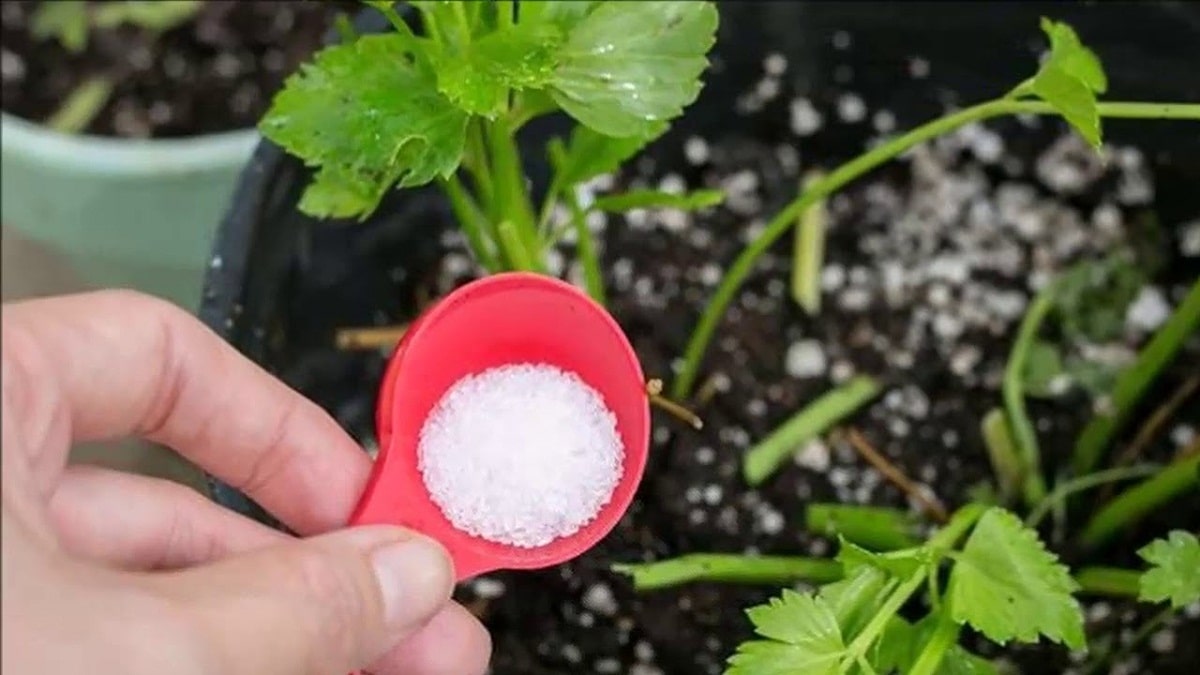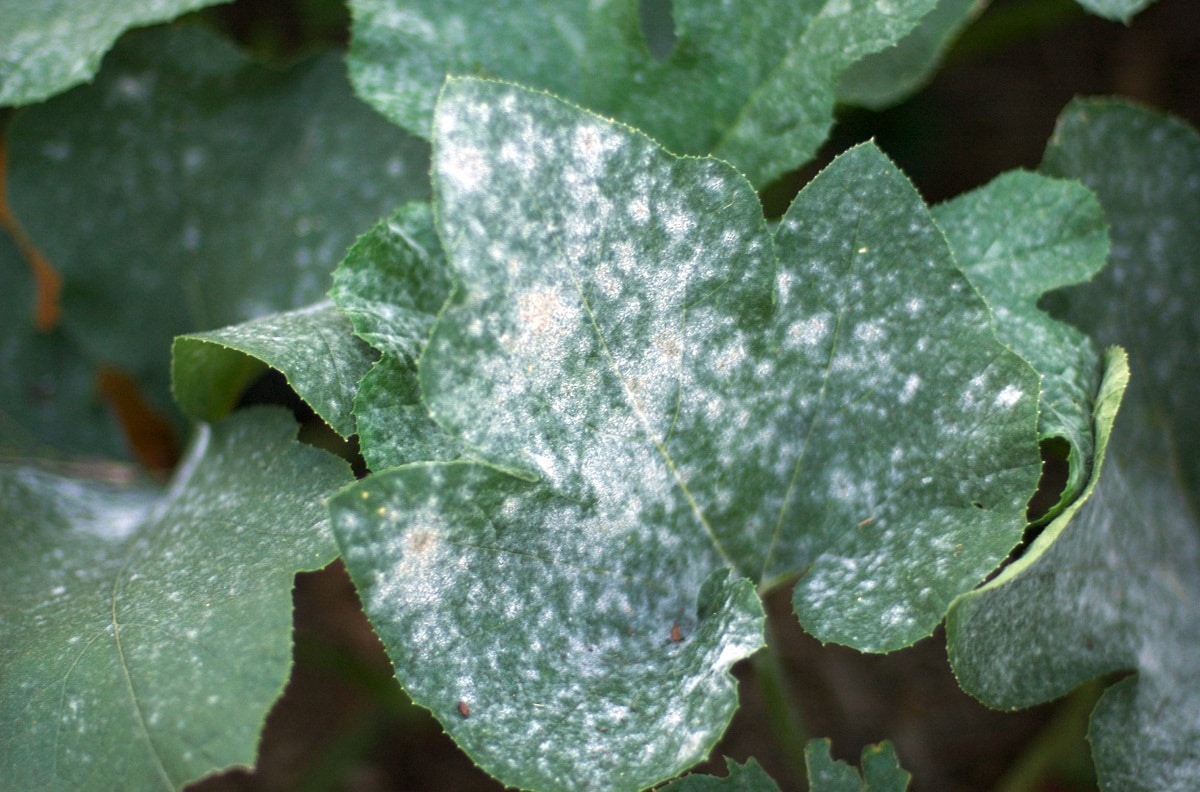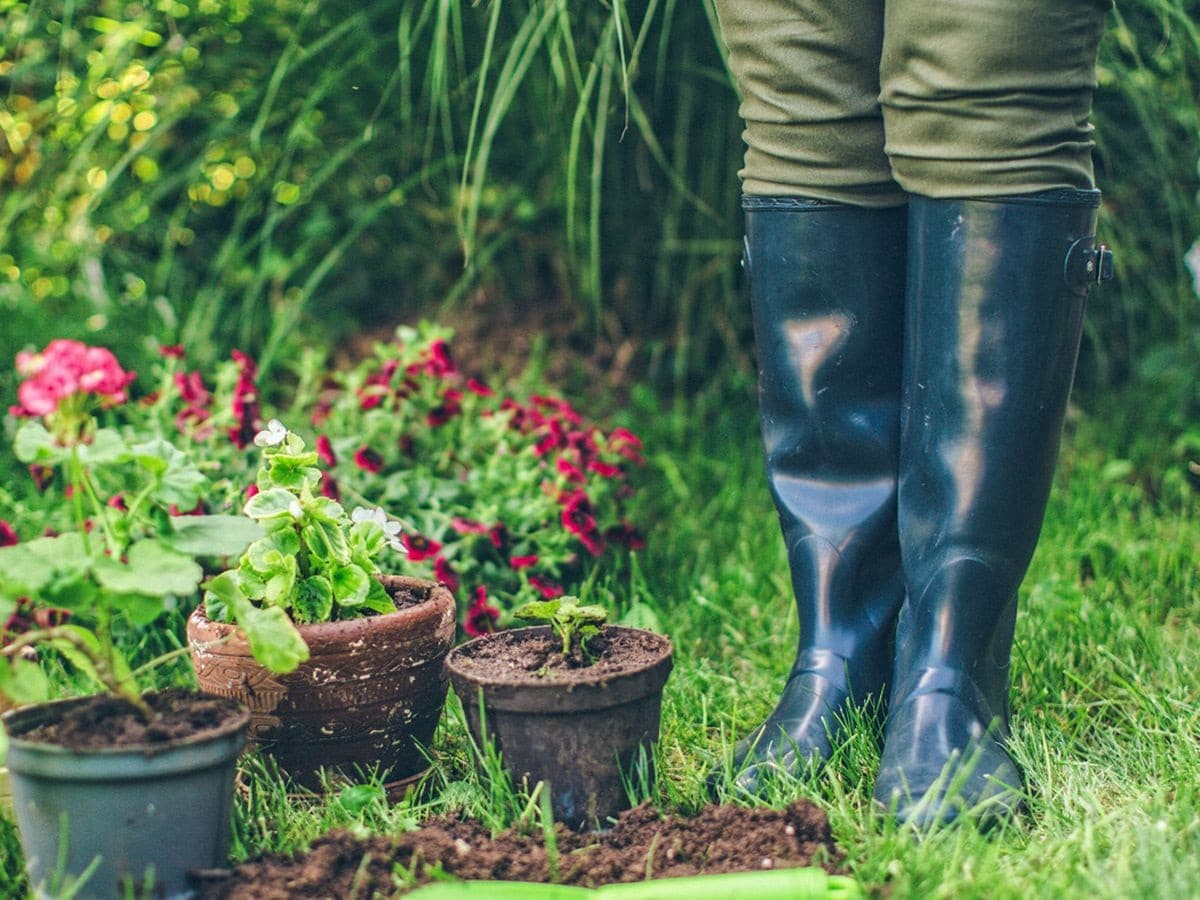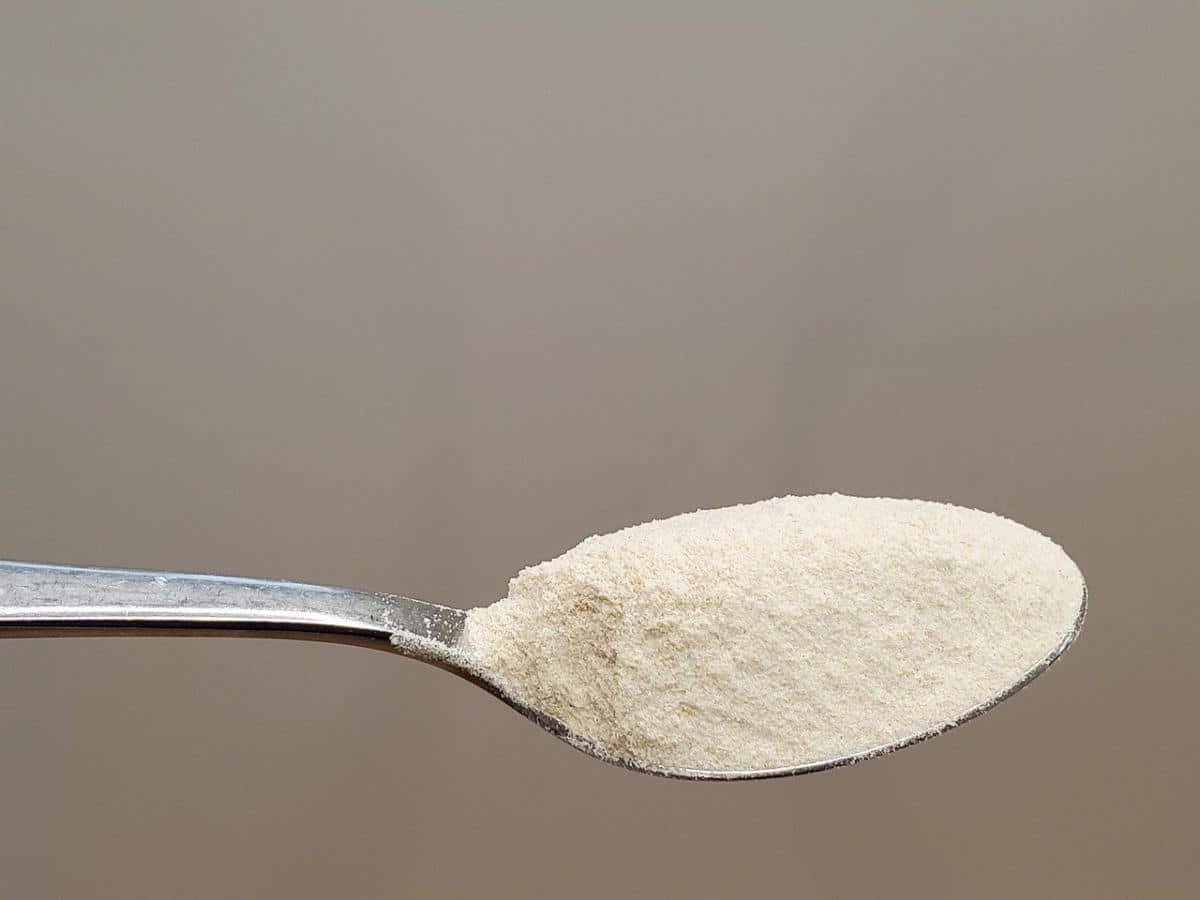
Are you looking for a natural insecticide or fungicide to combat pests and diseases this season? If so, you can stop looking, because I know for sure that you already have it. Sodium bicarbonate has enormous potential and use in the world of gardening.
So much is its effectiveness that it has already been proven through research, that applying baking soda can prevent outbreaks of any type of spore from developing and spreading through the rest of the plants in your garden. Of course, it is not as powerful as expected since it does not kill them completely.
Benefits of baking soda for your plants

Yes, yes, you may not believe me, but the truth is that if you have a pot of baking soda stored in the kitchen, your search has stopped. And if you do not have a boat at home, do not worry because thanks to our website you will be able to buy it at the best price and all the guarantees by clicking here.
It is cheap, very easy to obtain and, above all, it does not harm the environment. What more could you want? Baking soda has antifungal and insecticidal properties, depending on what you want to use it for. There are several ways to do it, and each one is prepared differently.
For example, If we want to prevent or fight fungi, we must mix four teaspoons of bicarbonate in 3 liters of water, and add a small spoonful of biodegradable soap.
But if what we want is to fight against the parasites that want to feed on our plants, what we must do is add a tablespoon to a liter of water and spray, or sprinkle a little on the surface of the substrate.
Don't forget to clean your hands using this productThis way you will eliminate any risk that any intruder (bacteria or fungus) could affect your health.
Another interesting use for baking soda is as follows: if mixed with vinegar carbon dioxide levels increaseThus, the photosynthesis speed is higher and the plant has more leaves and looks stronger.
But as in everything, precautions must be taken. Some plants may not be very good at it and it is very important that if you choose to spray it, you test it first on one or two leaves to see how it reacts. If after 24 hours they are still just green and healthy, then you can spray it all.
Research done with sodium bicarbonate in plants
There is no denying the fact that the use of baking soda is widely used all over the world. But this does not mean that it is a miracle cure because it is not. Simply helps reduce or prevent the appearance of fungi, bacteria, spores and others.
Of course, its effectiveness increases significantly when it is used with other methods to deal with the problems already mentioned. This is how various tests have been done over the last few years and it was determined that it is effective against mushrooms and bacteria.
But the same studies revealed a compound in baking soda that is not entirely beneficial to plants. That is there is a compound with the potential to seriously damage the plant if not used properly.
In the studies carried out, sodium bicarbonate was used in different proportions or amounts in plants. This in order to determine the potential of the element. Clearly favorable results were seen, but by increasing the dose or amount used, the problems began.
For you to keep in mind the next time you use baking soda on your plants, remember that it can affect them in the following way:
- It can burn the surface of the leaves.
- Increases the likelihood of burning roots or taking away their vitality.
- Excess baking soda can affect other parts of the plant.
If used in excessive amounts and continuous with the substrate, it can cause the soil to lose nutritional properties, which will affect the growth of future plants.
Despite all the above, you can rest easy, since you have to use a huge amount and for a long time baking soda for something like this to happen. However, it never hurts to take precautions and only use what is necessary.
How does baking soda work in plants?

In previous paragraphs, it was explained how this element has to be used. However, its operation has not yet been explained. The good thing is that it is super easy to understand since once you use it as a fungicide, this will affect the stabilization of the ions found in the cells of the fungus.
This imbalance ends up affecting the integrity of the fungus and after a certain time, they collapse, dying completely. Of course, this is not as easy as making a diluted preparation and that's it.
You have to know exactly the amount of baking soda and the amount of water to use to dilute the material. And this is where most people usually make the mistake and instead of killing fungi and / or bacteria, they end up affecting the physical integrity of the plant.
In case you don't know how to detect whether or not your plant is being affected by the dew you are applying, you have to look at the outside of the leaves. When the effects are negative, the leaves begin to turn brown or yellow. This is the most notable indication and can easily be countered by using less baking soda.
For practical purposes, you only have to use a 1% solution, the rest of the material will be waterAlthough we preferably recommend that you use vegetable oil or, failing that, soap, to increase effectiveness and reduce the risks of burning the plant.
Is baking soda only used to clean plants?
The answer to this is no. Generally, the use that is given is mainly to eliminate fungi, spores, bacteria and pests that a plant in an orchard or garden is having. However, the applications of this material do not end there.
So, you can employ the use of baking soda in such a way that you can clean the products or harvest that you are having in your garden. That is, if you have a small vegetable crop, you can maintain it naturally and safely with this material, always remembering that you have to dilute it very well.
The truth is that it is not complicated at all, you can take a container and fill it in half with water if it is a two-liter container, just have 1.5 liters of water or vegetable oil and then add only a teaspoon of baking soda.
When you have the mixture ready, you just have to take the fruit or vegetable you want to wash and put it in the container. You can carefully use your hand to rub the mixture on the surface of the product and remove any dirt or foreign material.
When you do this, don't quickly remove the mixture from the fruit or vegetable. Wait at least 10 minutes and then with clean water remove the mixture. As a curious fact, you can do exactly the same when you already have your harvest or if you prefer to clean fruits or vegetables that you are going to eat.
Special use of baking soda

Everyone who owns a garden must have tools to properly maintain it and maintain the integrity of the plants. Many people make the serious mistake of taking gardening shears for example, cutting the clusters, leaves or stems of a plant and do the same procedure over and over with a different plant.
You have to avoid doing this at all costs since you can transmit a plague or disease without knowing it. For it you don't need alcohol to clean your tools since sometimes it is expensive or not available at home.
Just use the same baking soda to clean your tools. You already know the preparation because it is exactly the same as the one you use to spray your plants or clean fruits or vegetables.
Now, Assuming the case that you find a stain that is not easily removed, you can directly use the baking soda in the area and wait for it to take effect. Then you just have to take a damp tissue and rub until the stain is removed.
So as you can see, sodium bicarbonate not only has no limited functions, but rather you have the complete pack in order to have a quality gardening job and all while keeping your plants safe, since they are natural methods that do not harm your plants if you are aware of the amount to use.
simple to prepare. I will practice it on my plants. Thank you.
What do you mean by the concept of "pulverize"?
Hi Irving.
To spray is to spray 🙂
Greetings.
Thank you very good topic, I did not know about the baking soda
Hello Apollonius.
We are glad to know that it has been useful to you. Greetings!
incredible and very simple I liked it a lot I will use it with all my garden
Sure you will be great 🙂
I was wrong with the dose of bicarbonate. It damaged the leaves of the pepper plant
..and I don't know if the fruits.
How can I remedy it?
Hello Ana.
Give it a generous watering, soaking the entire substrate well.
It is also advisable to add organic rooting hormones, such as lentils (here explains how to do it).
A greeting.
I wonder if I can spray the violets for the mites
Hello isbael.
For mites, water and mild soap, or an acaricide, is better.
Greetings.
Hello, thank you very much for your advice. I will try it with the rose bushes that Cohen mushrooms and industrial ones are always very expensive.
Hello Victoria.
Copper or powdered sulfur may also work for you. These two are good fungicides 🙂
Greetings.
hello I saw the leaves of my home joys white with black specks and provided with bicarbonate, just add water, will it work the same?
Hi Amancia.
It can work, but you may have to repeat the treatment in a couple of days if you don't see improvement.
Greetings 🙂.
I have a rose plant and the leaves have white spots, can I add bicarbonate of soda as you explained?
Hello Olga.
From what he says, his rose bush has powdery mildew, which is a type of fungus. In this case, I would recommend using a systemic fungicide, following the indications specified on the package.
A greeting.
Guava fruit tree can be fumigated
Hello Hugo.
Yes of course.
A greeting.
Thank you monica
One question, the tree has white motica
Hello Hugo.
If the tree does not have any pests, it is likely that it is being overwatered. White spots can appear from excess moisture.
You can treat it with systemic fungicide following the indications specified on the container, and space the waterings.
A greeting.
Hey.
Consultation to prepare the mixture of bicarbonate with vinegar, is it added directly to the substrate or is it diluted in water first and then the substrate is watered with that mixture?
Hi Sihan.
No, it is mixed with vinegar and then to the substrate 🙂
If you have any further questions, contact us.
Greetings.
Hello, I recently pruned a mango tree considerably, and in one of its wounds, over the days, white mold appeared, my question is: can I wash this with a preparation of water and bicarbonate, to eliminate mold? If so, won't your recovery be affected by the bicarbonate? ...
Thank you in advance.
Hi Elkin.
It is always better to spray a small area of the plant to see how it reacts, and then if you see that nothing happens, spray it all.
You cannot know if a certain species is going to have a bad time until it is treated a little, sorry 🙁.
From what you count, your plant could have mildew. You can treat this fungus with Fosetil-Al if the sodium bicarbonate does not convince you.
A greeting.
To apply to a small cactus with fungus, how much baking soda for a liter of water, how to apply it and how often?
Hi Cesar.
Half a small teaspoon (of the coffee ones) is enough. Spray all the cactus well and repeat every three to four days.
But it is also important to control the risks, letting the soil dry between one and the other.
A greeting.
Hello! I tell you that I am making biodegradable pots and I am trying different glues and I have found a recipe that contains bicarbonate, my question is if it is possible to use this glue without damaging the plants. The glue is composed of flour, water, vinegar, sugar and a tablespoon of bicarbonate. I hope you can guide me a little. I thank you in advance! Greetings!!!
Hello paola.
In principle I would say no, but I recommend you first try a part of a plant and see how it reacts. So you will know how it goes.
A greeting.
Hello, I have a chew of oregano and the leaves are eating it, what should I do? Thank you, stay tuned
Hi Marlene.
It depends on the insect or animal. If they are snails, a molluscicide in grains will do you well; if they are not those, you can use a universal insecticide.
A greeting.
Hi Monica, it seems like a long time has passed but I'm just reading the article.
What do you mean when you say "pulverize"?
Hi Patricia.
Spray or spray 🙂. It is the action of using an atomizer (plastic bottle that allows you to pour the liquid inside it in the form of a spray).
A greeting.
Hello Monica
I can use the bicarbonate to eliminate worms, my plant is indoor and it is a plastic pot, since I cannot have a clay one because of the place where I have it. I know that worms are beneficial for outdoor gardens, but my plants are rotting from the roots, I already checked the watering.
Thank you.
Hi Lula.
Earthworms are very beneficial, but in a pot they can wreak havoc.
More than bicarbonate, I would recommend treating with carbamate-based insecticides, such as Carbaryl.
A greeting.
in my pots I have several plants including violet daisies and balncas
But I have noticed that on the earth there are some types of worms about 1-2 cm long and 1/2 cm thick between white and crystalline, what is it due to and what can I do?
Hi Lizzy.
They have probably appeared because some butterfly or other insect has left its eggs there.
You can eliminate them with anti-worm insecticides that you will find for sale in nurseries.
A greeting.
Hi, I'm Ana, I have ants all over the terrace, I have a lot of plants and I also have them at home, too, I'm tired of using all natural and chemicals and they don't go away. I'm desperate ...
Hello Ana Tomas.
Try diatomaceous earth (they sell it on amazon). It works 😉
A greeting.
Hello Monica, do you think that the mixture of bicarbonate and vinegar can serve succulents? or is there something different that helps them grow more? Thanks
Hi Di.
For the succulents to grow well, they must be changed from pot every 2 years, and fertilized with mineral fertilizers such as Blue Nitrofoska, every 15 days.
A greeting.
Hello, I found a brown worm on my plant and a green one, how can I eliminate them? Thank you
Hello Veronica.
You can remove it with cypermethrin 10%, which is a soil insecticide.
A greeting.
Hello, in my garden I have amaranths and durantas and these are being eaten by a light green worm about 1cm. It only eats the leaves that it serves so that this does not continue to happen.
Hi Bertha.
I do not recommend it for that. It is better insecticides like Cypermethrin 10%.
A greeting.
I have 10 stormy pawlonia, I was 40 and I only have 10 left, a brown and something black spot appears on the leaves and it disperses to other leaves until it loses the leaves and dies, what type of fungus or pest is it, whether I treat with hydrogen peroxide Reduced with water, some vinegar, soap, water and they continue to appear, the plants are in pots of 60 or 70 cm. I will plant them in a country house with a lot of garden and trees in order to create a culture in their cultivation, HOW CAN I ELIMINATE THIS TYPE OF FUNGUS OR PEST? THANKS I LIVE IN A DESERT CLIMATE WITH EXTREMELY TEMPERATURES, OF 5 DEGREES C. IN WINTER, JANUARY AND FEBRUARY AT TEMPERATURES OF 40 TO 45 C. IN SUMMER JULY AUGUST AND PART OF SEPT. IN MEXICALI BAJA CALIFORNIA MEXICO, CLOSED TO THE BORDER WITH THE USA IN CALIFONIA. THANK YOU.
Hello Salvador.
When you water, do you wet the leaves? If so, I don't recommend doing it as they burn out right away.
And, how often do you water? They are trees that need a lot of water, but not flooded.
Treat them with fungicides, this will eliminate the fungi.
A greeting.
I have a 40 cm lucumo. and a small black caterpillar appeared that is eating the leaves. How do I remove them?
Hey.
You can treat with 10% cypermethrin, or with diatomaceous earth (it is available in amazon, and in those stores that sell a little of everything such as animal feed, plant substrates, etc.).
A greeting.
Thank you thousand, with your information I learn a lot. I adore my little plants, and you will help me to preserve them much better. Congratulations.
We are glad that it was useful for you, Rosalia 🙂
Hello,
I am Hugo,
You would need to know the proportions of baking soda and vinegar to mix.
From already thank you very much.
Hello Hugo.
Mix seven teaspoons of baking soda with half a cup of vinegar in 5 glasses of water. Try first on a leaf, since as we say in the article, not all plants will do well.
Greetings.
Good morning, for vertical gardens does bicarbonate work? I get a fungus due to the humidity that is like a brown rubber snail, you can inform me what I have to do to eliminate it are gardens with the hydroponic system.
Hello Andrea.
In your case, potassium bicarbonate, in 1% solutions, will be more helpful.
But if the disease is already widespread, it is better to use chemical fungicides that contain Benomyl or Captan.
Greetings.
I have a trunk from Brazil, the leaves are turning with brown spots, they told me it had a fungus and also cochineal. What can I do so that I don't get lost. Thanks a lot
Hello Elisa.
How often do you water it? This plant needs moderate watering, 2-3 times a week and less the rest of the year.
If you have a plate underneath, you must remove the water that is left after you have watered; And if you have it in a pot without holes, I recommend changing it to one that does have holes in the base to prevent the roots from rotting.
In the blog we have an article about him Brazil trunk. Click on the link if you want to take a look 🙂
Regards!
I only used the bicarbonate to lower the acidity of the earth. Very good note.
Hi Osvaldo.
Great that you liked it.